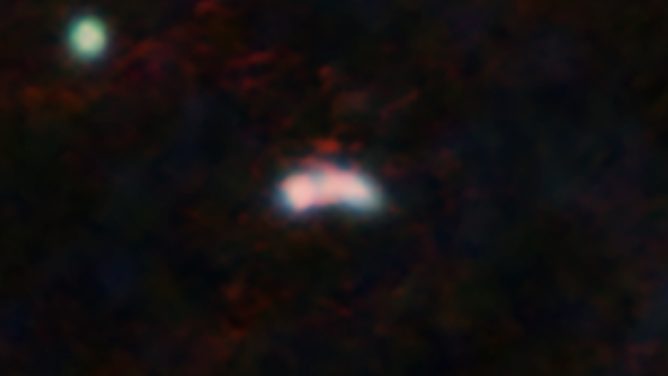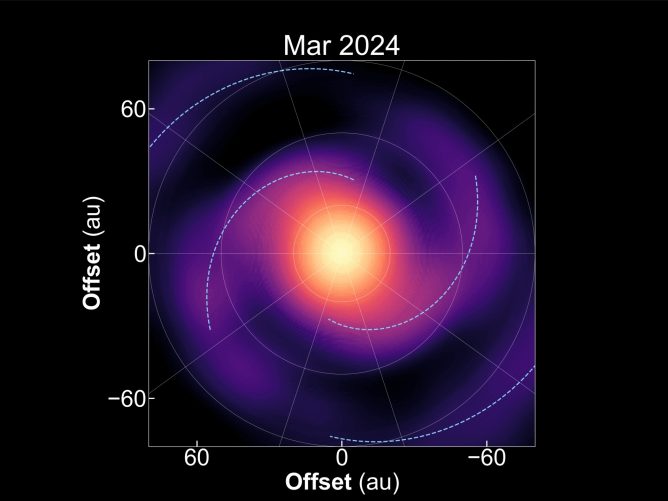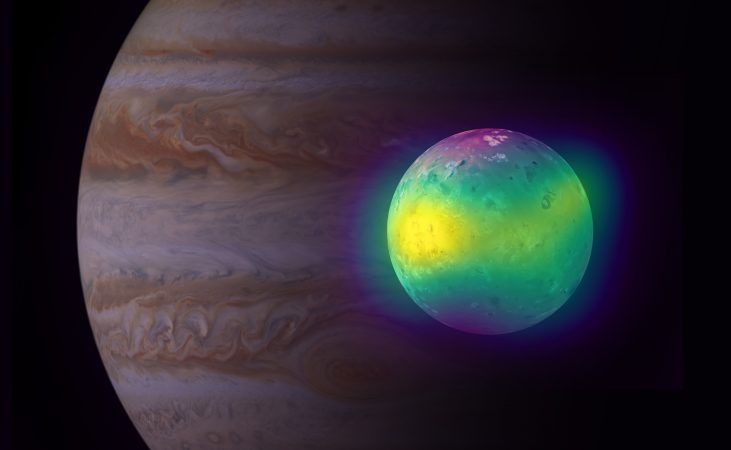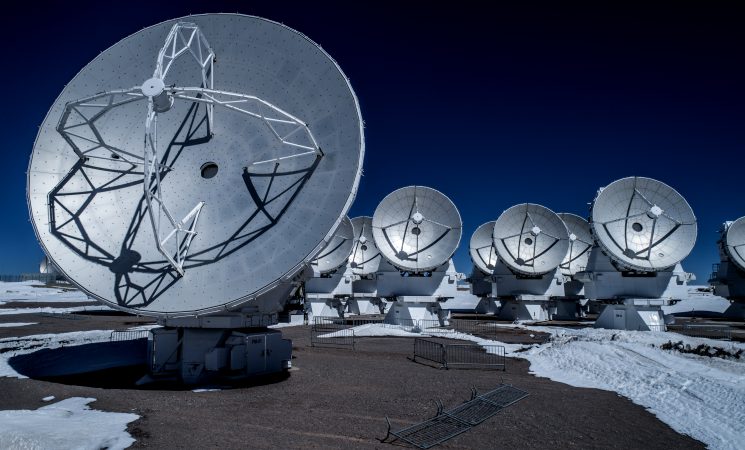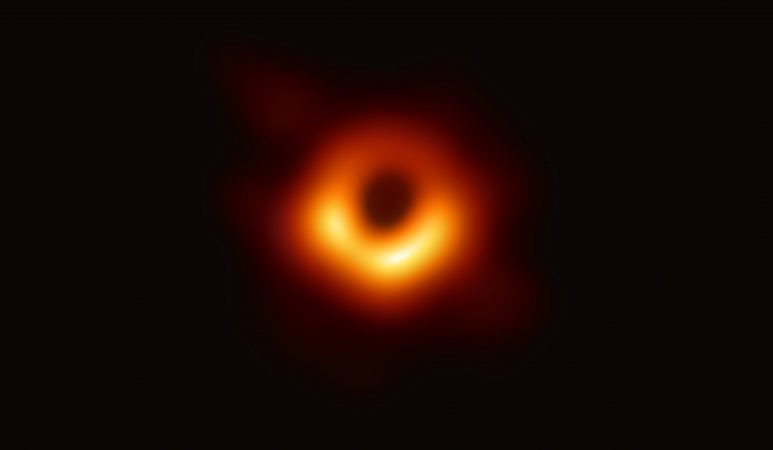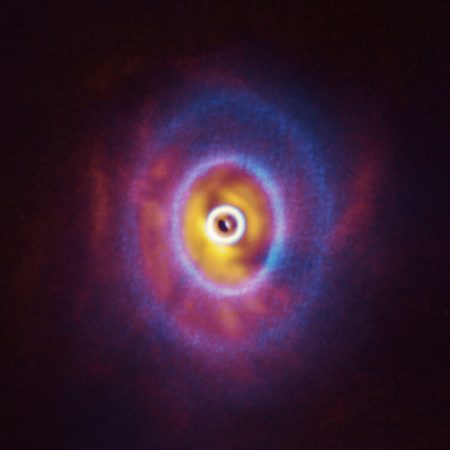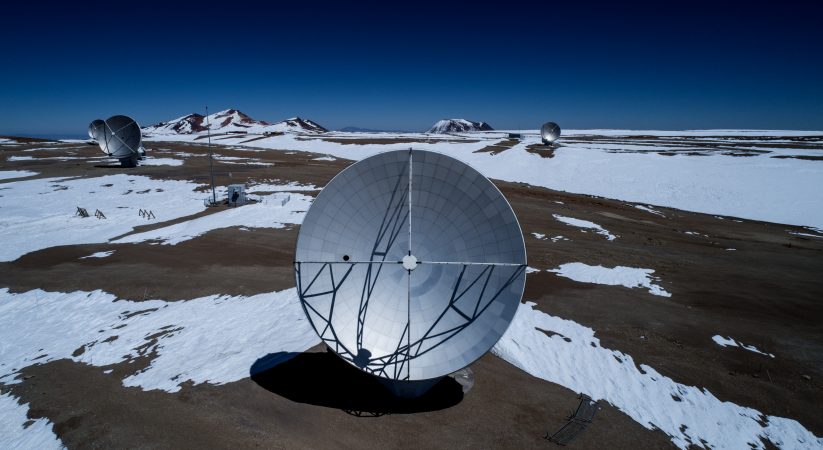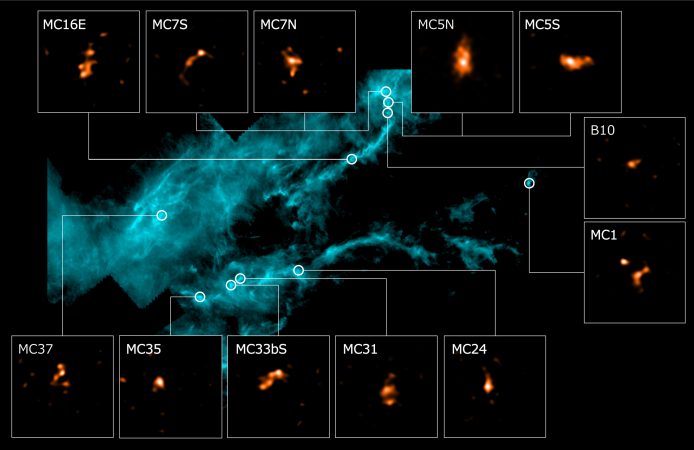2025.05.22
A Fierce Storm in a Giant Barred Spiral Galaxy 11 Billion Years Ago
In the early Universe more than 10 billion years ago, numerous monster galaxies were in the process of forming stars at a rate that is over 100 times faster than that of the Milky Way. Although there are a few galaxies that are undergoing star formation at a similar pace even in the present-day Universe, almost all of them are colliding or merging galaxies. Based on this, scientists assumed that such intense bursts of star formation in monster galaxies are also caused by substantial gas influx at their centers as a consequence of galaxy collisions or mergers, and that they evolve into giant elliptical galaxies once the gas is depleted.
Monster galaxies are far from Earth and obscured by massive amounts of dust generated by intense star formation, making them difficult to observe at optical wavelengths. Up until lately, their shape and the mechanism (physical process) that drives such bursts of star formation remained largely unknown. However, recent infrared imaging observations with the James Webb Space Telescope have uncovered dust-veiled monster galaxies, revealing the existence of many monster galaxies with a remarkable disk structure. This prompted a new question: Why are monster galaxies that appear to be ordinary disk galaxies experiencing such intense bursts of star formation?
A research team led by Shuo Huang targeted a monster galaxy with a barred spiral structure in the Universe 11.1 billion years ago. The galaxy called J0107a, located at a redshift of z=2.467, was serendipitously found in 2014 during the observation of the nearby merging galaxy VV114. The James Webb Space Telescope near-infrared images of VV114, released in 2023, revealed that J0107a is an exceptionally massive example of a monster galaxy, with a mass more than ten times that of the Milky Way Galaxy and a star formation rate approximately 300 times that of the Milky Way. Even more surprisingly, J0107a has a perfect barred spiral structure, one of the largest and most distinct of any galaxy in this cosmic epoch. The shape looks more similar to modern barred spiral galaxies than any other previously observed monster galaxies. While more information on gas kinematics is needed to explore the factors behind J0107a’s intense star formation, spectroscopic observations of a dust-covered galaxy are extremely challenging, even with the James Webb Space Telescope.
The research team then used ALMA to observe the emission lines of carbon monoxide and neutral carbon atoms and discovered that J0107a closely resembles modern barred spiral galaxies, such as the Milky Way, in terms of the shape of its bar structure as well as the distribution and movement of the associated gas. On the other hand, the team also found that while the proportion of gas in the bar structure of a modern galaxy is less than 10% of the total mass, that of J0107a is very high at around 50%. The data shows that J0107a’s bar structure, which consists of stars and gas with a mass far greater than that of modern galaxies, stirs up the disk, creating a gas flow at a speed of several hundred kilometers per second over a radius of 20,000 light years around the center of the galaxy, which is equivalent to the distance from the center of the Milky Way to the Solar System. Some of this gas falls into the center of the galaxy, resulting in intense star formation. No previous theoretical studies of galaxy formation predicted the existence of a monster galaxy with such a bar structure.
This is the first successful direct observation of a burst of star formation induced by gas inflow from a bar structure in the early Universe. The conventional theories of monster galaxy formation and evolution assumed that intense star formation occurs due to galactic collisions and mergers, or gravitational instability in their disks, subsequently turning them into elliptical galaxies over the course of hundreds of millions of years. Meanwhile, J0107a is assumed to have developed a shape resembling that of a modern barred spiral galaxy, while retaining the extreme physical properties of a monster galaxy, over hundreds of millions of years in the early Universe just 2.6 billion years after the Big Bang. The detailed data on gas distribution and kinematics obtained from this observation will provide important clues for not only the origin of monster galaxies, but also for research into the formation and evolution of bar structures in other galaxies because we are witnessing the bar structure formation process in the early Universe.
Shuo Huang, the leader of the research team, says, “The substantial amount of gas required for the growth of giant galaxies is supplied by galactic mergers or inflows from the cosmic web. While there is no sign of a galactic merger, a large gas disk has been detected around J0107a. This gas disk has a diameter of about 120,000 light years, which is twice the diameter of the main body of the galaxy visible as stars, and its motion roughly follows the galaxy itself. Based on this, we assume that it was created from a large amount of gas that is spiraling towards the galaxy from the cosmic web (see note below). This is a new picture of a monster galaxy, in which a disk galaxy is formed from a cosmic-scale gas flow, followed by the emergence of a bar structure during the galactic evolution, leading to rapid galactic-scale gas flows and bursts of star formation. We will continue our observational studies with ALMA to look into this further.”
Note: These gas flows are predicted theoretically and referred to as “cold streams.”
This research has been published in Nature on May 21, 2025 as Shuo Huang et al. “Large gas inflow driven by a matured galactic bar in the early Universe”, (DOI: 10.1038/s41586-025-08914-2).
This research is supported by Grants-in-Aid from the Japan Society for the Promotion of Science (KAKENHI: Nos. JP22H04939, JP23K20035, JP24H00004) and the ALMA Joint Scientific Research Program (No. 2024-26A).
The Atacama Large Millimeter/submillimeter Array (ALMA), an international astronomy facility, is a partnership of the European Organisation for Astronomical Research in the Southern Hemisphere (ESO), the U.S. National Science Foundation (NSF) and the National Institutes of Natural Sciences (NINS) of Japan in cooperation with the Republic of Chile. ALMA is funded by ESO on behalf of its Member States, by NSF in cooperation with the National Research Council of Canada (NRC) and the National Science and Technology Council (NSTC) in Taiwan and by NINS in cooperation with the Academia Sinica (AS) in Taiwan and the Korea Astronomy and Space Science Institute (KASI).
ALMA construction and operations are led by ESO on behalf of its Member States; by the National Radio Astronomy Observatory (NRAO), managed by Associated Universities, Inc. (AUI), on behalf of North America; and by the National Astronomical Observatory of Japan (NAOJ) on behalf of East Asia. The Joint ALMA Observatory (JAO) provides the unified leadership and management of the construction, commissioning and operation of ALMA.

Left: Near-infrared image of a nearby galaxy VV114 and the background monster barred spiral galaxy J0107a at z=2.433 captured by the James Webb Space Telescope (credit: NASA). Right: Stellar and molecular gas distribution of J0107a (credit: NASA, ALMA(ESO/NAOJ/NRAO), Huang et al.).

Left: Near-infrared image captured by the James Webb Space Telescope. The two galaxies at the bottom are the foreground objects. Right: Molecular gas distribution observed by ALMA. Gas accumulates at the leading side of the rotating bar structure and falls toward the center. (credit: NASA, ALMA(ESO/NAOJ/NRAO), Huang et al.).

